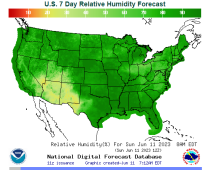To add to my earlier input... One of the things many people forget is that while it makes good sense to plan the SIZE of your system for the coldest days (you don't ever want to be cold in your own home), it may not make sense to plan the TYPE of system around that. I know folks who complain about the cost of their minisplit running when it's -15F here, and yes, it is a lot more than when it's 20F or 25F. But even here in Maine (midcoast/central) we get only a few days - now, often as little as ~72 hours spread over the winter - of sub zero weather each year. So for the vast majority of the time, and certainly overall, the minisplit is the clear winner for anything other than wood heat, which as others have noted is a giant pain in the rear, or geothermal, which had a vey large upfront capital cost that can take up to three decades to recoup, if ever. If you do the math, the cost of capturing, concentrating, and moving heat (what a mini split actually does) is almost always lower than burning something to generate it, and then having to distribute that heat. Wood is still cheaper if you do the math, but I doubt that will remain the case for much longer, and if you already have enough PV installed, it's not the case at all.
Re: infloor radiant (often hydronic) heat, it's fantastic to feel that heat on your toes, and it's very efficient in terms of distributing heat. But in a high-performance building (great air sealing, very well insulated), the rate of heat loss from the building is almost always so low that the floor doesn't need to give off much heat. The result is that it feels essentially like room temperature, rather than warm. It's still great as a heat distribution method, but you don't normally get that wonderful "warm toes" feeling. Also, for the person who said their radiant heat was excessively expensive, this is almost always a result of an uninsulated (or at least very poorly insulated) slab. That's a design/builder problem, as failing to insulate a slab in all but the warmest US climate zones means you are using the earth as a heat sink, and your HVAC is now trying to warm the earth itself. There is no good fix for that other than turning it off and installing another type of heat.
Finally, in the US, air to water heat pumps (mini splits) still cost considerably more than air to air versions of the same basic technology. So while air to water is more efficient in terms of heat storage and distribution, the recent improvements in the performance of air to air heat pump technology, combined with the upfront cost differences between these two types of units, can be difficult to overcome. One of my best friends is an HVAC wholesaler for multiple top tier brands, and as we plan our new home he is very clearly steering me to air to air mini splits. We can install anything, but for a home with great sun exposure, good air sealing and insulation, and a decent amount of PV, the math says air to air mini split from a proven, reliable manufacturer.




